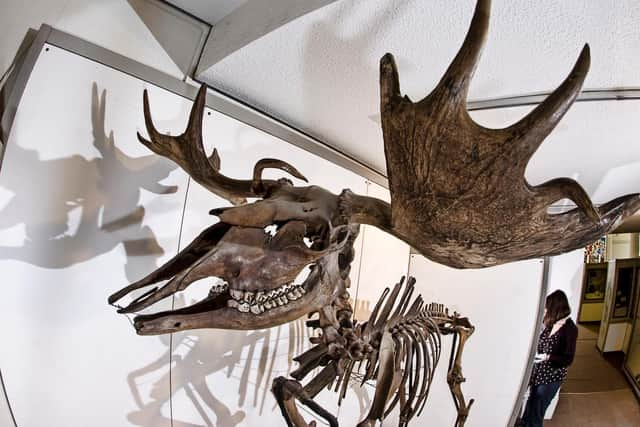50 years since the discovery of Horace the ice age elk in Carleton
and live on Freeview channel 276
On July 19 1970, John Devine made the strange discovery when demolishing a bungalow in Carleton.
He noticed what looked like antlers sticking out of the ground, and on further inspection found more bones.
Advertisement
Hide AdAdvertisement
Hide AdMr Devine's neighbours Jim Audus and Tony Scholey, who lived around where Blackpool Sixth Form now stands, helped to assemble them.


Amongst the elk's ribs, a barbed point was found - the kind used by human hunters around 10,000 years ago.
As the discovery began to hit news headlines, an archaeology team, led by county archaeologist for Lancashire Ben Edwards, came to excavate the bones.
It was Mr Edwards who named the elk "Horace."
The elk's skeleton now resides at the Harris Museum in Preston, which celebrated half a century since the beast's discovery this week.
Advertisement
Hide AdAdvertisement
Hide AdJames Arnold, history curator at the museum, explained that the condition of the male elk's antlers showed it died in early winter.
"We can see it was about to shed its antlers. There are also numerous injuries on the bones, 17 in fact, caused by flint-tipped weapons.
"We can see that humans attacked it on both sides. In the 1970s, the soil samples were dated and in the 2000s the leg bones were dated by radiocarbon dating.
"The dating gave the elk an age of around 13,500 years. It was dated to 11,500BC, right at the end of the last ice age."
Advertisement
Hide AdAdvertisement
Hide AdSoil samples collected around the elk detected pollen and small freshwater fish, indicating that Carleton was a swampy, forested area.
Experts agreed that the demise of Horace came as a result of being hunted by humans, managing to escape to water, and succumbing to his injuries.
His skeleton remains as the earliest evidence of human habitation in Lancashire.
There have been other signs of man living on the Fylde coast in prehistoric times, however.
Advertisement
Hide AdAdvertisement
Hide AdPottery from the Bronze Age – 3,300BC to 12,000BC – was recovered from Skippool Bridge, while a stone arrowhead was found to the south-west of Poulton.
In November 2018, the remains of a Roman settlement were found a stone’s thrown from the River Wyre while new homes were being built off Garstang Road East in Poulton.
The roundhouses were thought to be 2,000 years old.